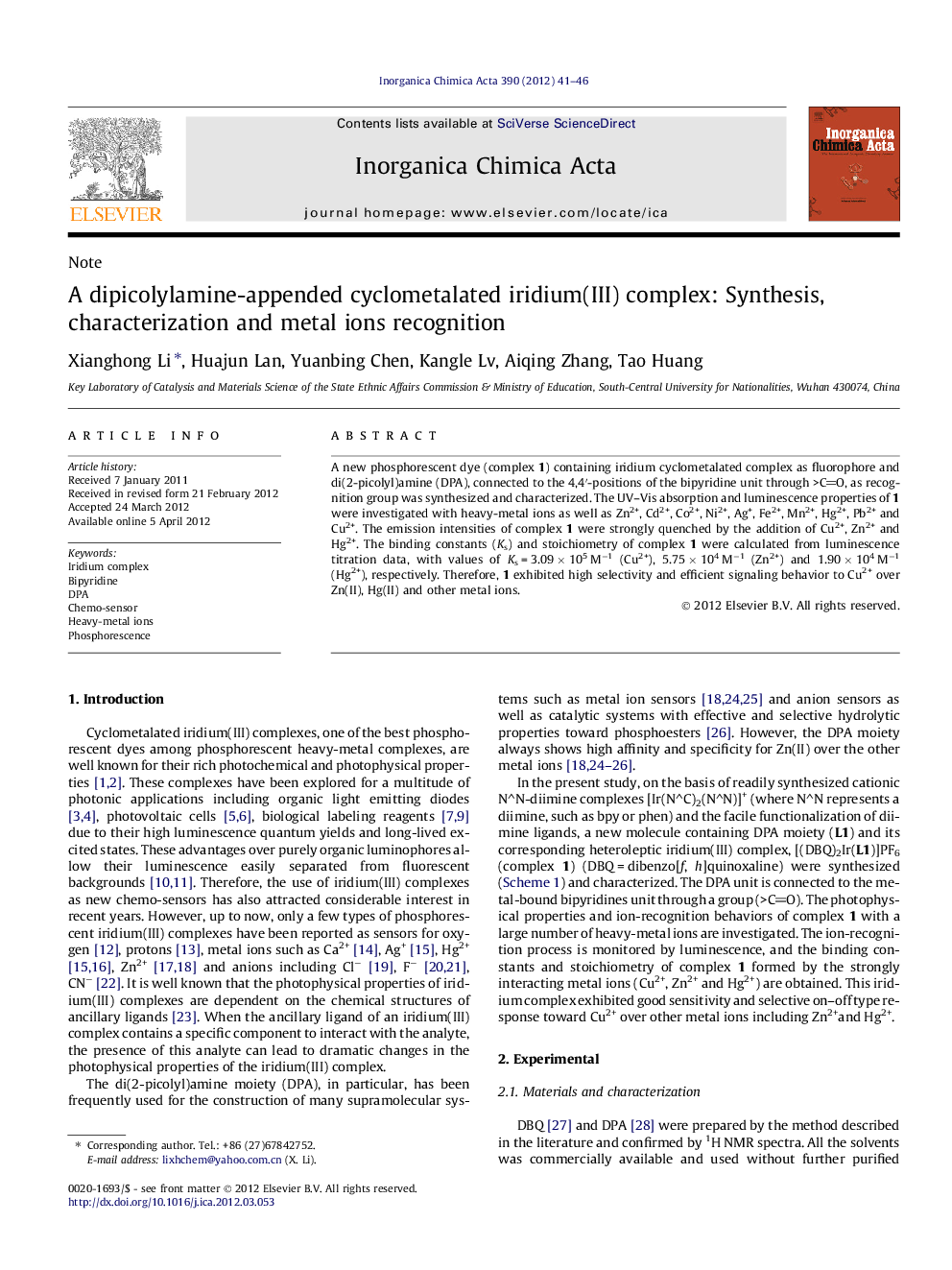| Article ID | Journal | Published Year | Pages | File Type |
|---|---|---|---|---|
| 1312453 | Inorganica Chimica Acta | 2012 | 6 Pages |
A new phosphorescent dye (complex 1) containing iridium cyclometalated complex as fluorophore and di(2-picolyl)amine (DPA), connected to the 4,4′-positions of the bipyridine unit through >CO, as recognition group was synthesized and characterized. The UV–Vis absorption and luminescence properties of 1 were investigated with heavy-metal ions as well as Zn2+, Cd2+, Co2+, Ni2+, Ag+, Fe2+, Mn2+, Hg2+, Pb2+ and Cu2+. The emission intensities of complex 1 were strongly quenched by the addition of Cu2+, Zn2+ and Hg2+. The binding constants (Ks) and stoichiometry of complex 1 were calculated from luminescence titration data, with values of Ks = 3.09 × 105 M−1 (Cu2+), 5.75 × 104 M−1 (Zn2+) and 1.90 × 104 M−1 (Hg2+), respectively. Therefore, 1 exhibited high selectivity and efficient signaling behavior to Cu2+ over Zn(II), Hg(II) and other metal ions.
Graphical abstractA new phosphorescent dye containing iridium cyclometalated complex and di(2-picolyl)amine was synthesized and characterized. The UV–Vis absorption and luminescence properties were investigated with some heavy-metal ions. The binding constants (Ks) and stoichiometry demonstrated that it can be used as an excellent “turn-off” luminescent chemodosimeter toward Cu2+ over other metal ions.Figure optionsDownload full-size imageDownload as PowerPoint slideHighlights► A new phosphorescent iridium complex containing di(2-picolyl)amine was synthesized. ► The interactions between the complex and heavy-metal ions were investigated. ► The complex can be used as an excellent “turn-off” luminescent chemodosimeter toward Cu2+ over Zn2+.
